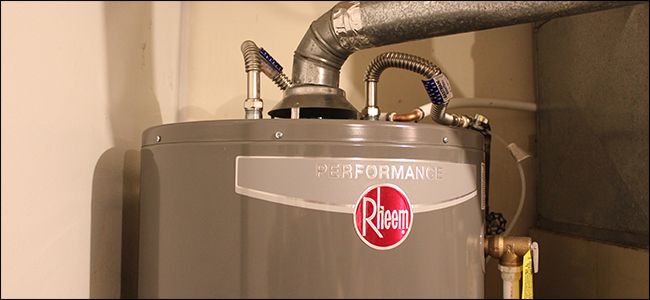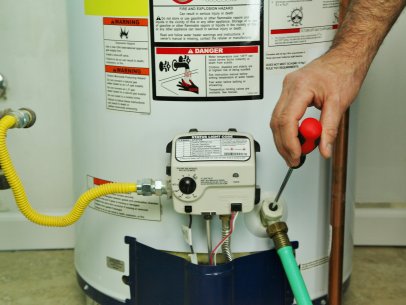Easy Guide to Maintaining Your Home's Hot Water System
Easy Guide to Maintaining Your Home's Hot Water System
Blog Article
What are your opinions concerning What Kind of Maintenance Do Water Heaters Need??

Warm water is vital for daily convenience, whether it's for a refreshing shower or washing recipes. To ensure your hot water system runs effectively and lasts much longer, regular upkeep is essential. This write-up provides useful tips and insights on just how to maintain your home's warm water system to avoid interruptions and costly repair services.
Introduction
Preserving your home's hot water system may appear daunting, but with a couple of straightforward steps, you can guarantee it operates smoothly for several years to come. This guide covers whatever from recognizing your hot water system to do it yourself maintenance suggestions and recognizing when to hire expert help.
Significance of Preserving Your Warm Water System
Regular maintenance not just extends the life expectancy of your warm water system but likewise guarantees it runs efficiently. Ignoring upkeep can lead to reduced performance, greater power bills, and even early failing of the system.
Signs Your Hot Water System Demands Upkeep
Knowing when your hot water system needs interest can protect against major issues. Watch out for indicators such as irregular water temperature, unusual noises from the heating unit, or corroded water.
Understanding Your Hot Water System
Prior to diving right into upkeep tasks, it's useful to comprehend the fundamental parts of your warm water system. Typically, this includes the water heater itself, pipes, anode poles, and temperature level controls.
Month-to-month Upkeep Tasks
Normal monthly checks can help catch minor issues before they intensify.
Purging the Hot Water Heater
Purging your hot water heater gets rid of debris build-up, boosting effectiveness and extending its life.
Monitoring and Changing Anode Rods
Anode poles stop deterioration inside the container. Evaluating and changing them when broken is critical.
Evaluating and Readjusting Temperature Level Setups
Readjusting the temperature level setups makes certain optimum efficiency and security.
DIY Tips for Maintenance
You can perform several upkeep jobs on your own to maintain your warm water system in top problem.
Looking for Leakages
Regularly examine pipes and connections for leaks, as these can result in water damages and greater expenses.
Checking Stress Alleviation Valves
Checking the stress safety valve guarantees it operates appropriately and protects against too much stress build-up.
Shielding Pipelines
Shielding warm water pipelines minimizes warm loss and can conserve energy.
When to Call a Professional
While do it yourself upkeep is useful, some concerns call for expert knowledge.
Facility Problems Needing Professional Aid
Examples include significant leakages, electrical troubles, or if your hot water heater is regularly underperforming.
Routine Specialist Maintenance Benefits
Specialist maintenance can include complete inspections, tune-ups, and making certain conformity with safety criteria.
Final thought
Regular upkeep of your home's hot water system is crucial for performance, durability, and cost financial savings. By complying with these tips and recognizing when to seek specialist help, you can make certain a trustworthy supply of warm water without unforeseen disruptions.
How to Maintain an Instant Hot Water Heater
Before tinkering with your hot water heater, make sure that it’s not powered on. You also have to turn off the main circuit breaker and shut off the main gas line to prevent accidents. Also turn off the water valves connected to your unit to prevent water from flowing into and out of the appliance. 2. When you’re done, you have to detach the purge valves’ caps. These look like the letter “T†and are situated on either side of the water valves. Doing so will release any pressure that has accumulated inside the valves while at the same time avoid hot water from shooting out and burning your skin. 3. When the purge valves’ caps are removed, you have to connect your hosing lines to the valves. Your unit should have come with three hoses but if it didn’t, you can purchase these things from any hardware or home repair shops. You can also get them from retail stores that sell water heating systems. Read the user’s manual and follow it to complete this task properly. When the hosing lines are connected, open the purge port’s valves. 4. You should never use harsh chemical cleaners or solutions when cleaning your unit. Make use of white vinegar instead. It should be undiluted and you’ll probably use about 2 gallons. 5. Now flush your water heater. This task should probably take about 40 minutes. We can’t give you specific directions for this because the procedure is carried out depending on the type, model and brand of your heater. With that being said, refer to the user’s manual. 6. When you’re done draining the unit, you have to turn off the purge port valves again. Remove the hosing lines that you earlier installed on each of the water valves. Put the valve caps (purge port) back in their respective places and be very careful so as not to damage the rubber discs that are found inside these caps. 7. Now that everything’s back in place, check your user’s manual again to find out how to reactivate your water heating system. 8. Once it is working, turn one of your hot water faucets on just to let air pass through the heater’s water supply pipes. Leave the tap on until water flows smoothly out of it. https://www.orrplumbing.com/blog/2014/september/how-to-maintain-an-instant-hot-water-heater/

I came across that entry on How to Maintain Your Water Heater & Prolong its Life when doing a lookup on the search engines. Please pause to promote this post if you liked it. We truly appreciate reading our article about Tips on Maintaining a Water Heater.
Click Here Report this page